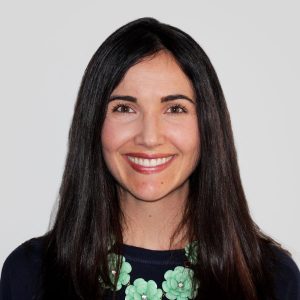The Evolution of Stakeholder Mapping: Looking Back on a Decade of Research with Rx4Good’s Meg Hanhan
- by: Rx4good |
August 18, 2019 - Categories:

An interview with Rx4good’s Counselor and Mapping Expert, Meg Hanhan, provides insight into the evolution of stakeholder mapping and its value as a competitive intelligence tool and a window into the unmet needs of patients.
Why Conduct Mapping?
MH: The universe of patient organizations supporting people with rare and common diseases is vast while, unfortunately, resources to support charitable donations and sponsorships often are not. Even within a specific disease, multiple organizations exist to support young or multi-cultural patients, people with advanced or early disease or people with specific genetic mutations. Mapping provides a window into the competencies and differences of groups and provides an objective way of understanding how each – with targeted resources – can best support the educational, policy, medical and psychosocial needs of patients and caregivers.
How did Rx4good get involved in mapping?
MH: From the very start, mapping has been a core competency of Rx4good because of its importance to our clients. As a start-up in 2009, we knew we had to offer a better mapping product than others. So, we developed a methodology that meshed quantitative and qualitative analysis, competitive intelligence and a review of the overall patient ecosystem to help our clients make informed decisions about their nonprofit partners.
What’s the benefit of quantifiable scores?
MH: The score provides an opportunity to look objectively at core competencies of an organization across our client’s needs areas and business goals. Let’s face it, in healthcare we are all data-driven and appreciate the strength of evidence to support decisions. Scoring allows us to tease out each organization’s core strengths against the core strengths of others in the same space so that our client can make funding decisions based on those strengths.
Your approach has been called “best-in-class” by clients. Why?
MH: We go deep in doing our research and look at all facets of an organization, its leadership, creative programming, partnerships, best practices, sustainable revenues, ethics code, metrics and transparency. And we provide actionable insights to help guide client decisions. In addition, we look at other data sources, including published papers, to assess the patient experience of disease and the unmet needs from the patient or caregiver perspective. Our ultimate goal is to look holistically at the disease category and the groups that function in that category in order to help guide client strategy.
How did you develop your methodology of the 4 R’s?
MH: We determined, based on research with clients, that there are four important facets of an organization to evaluate:
- Reach: Who is the target audience and how does the group reach them?
- Relevance: How relevant are they to our client’s business, clinical development, educational or policy interests?
- Reputation: How is the group viewed by others, including charity rating services, competitors, partners; and how do they measure their impact and utilize their funds?
- Relationship: What is the nature of their relationships with industry and other prestigious non-profits or coalitions in the therapeutic area, and are partnerships sustainable and meaningful?
In what areas are clients keen to have data?
MH: Clinical trial education (especially innovative approaches), registries, policy activities, and the patient’s unmet needs in terms of education and support are generally all high on the list of client needs.
What about the patient in your mapping research? How do you make sure your results are focusing back on them?
MH: This is critically important to our mapping. We want to understand the patient in full: what is their life like? What are the hurdles they face? What can our clients do to proactively help patients with quality of life issues, support services, and education?
What insights do you have about patient organizations after a decade of research?
MH: First, patient organizations are extraordinarily dedicated, passionate and experts in supporting and fulfilling the emotional, informational, and support needs of patients. Many are also very sophisticated in advocating for policies that serve patients and caregivers well. There are vast differences around the world in the size of patient organizations, their scope and how groups communicate with their constituencies and relate to industry. Yet, they share common challenges, including fundraising, governance, capacity building, motivating volunteers, strategic planning and reporting.
Where do you want to go next with mapping?
MH: We are very excited about where we are going. We’ve done hundreds of mappings in the last decade, spanning 33 different countries. We have tremendous data and learnings to share about patient organizations, professional societies and policy groups, and we are putting software solutions in place so we can track the data and analyze trends. We also want to continue to go deeper by looking at registries, centers of excellence, digital leaders and the social landscape so that we continue to provide a 360-degree perspective of the patient and their needs.
If your company is interested in learning more about Rx4good’s stakeholder mapping and how it could help you reach your internal objectives, please contact Meg Hanhan at meg.hanhan@rx4good.com
